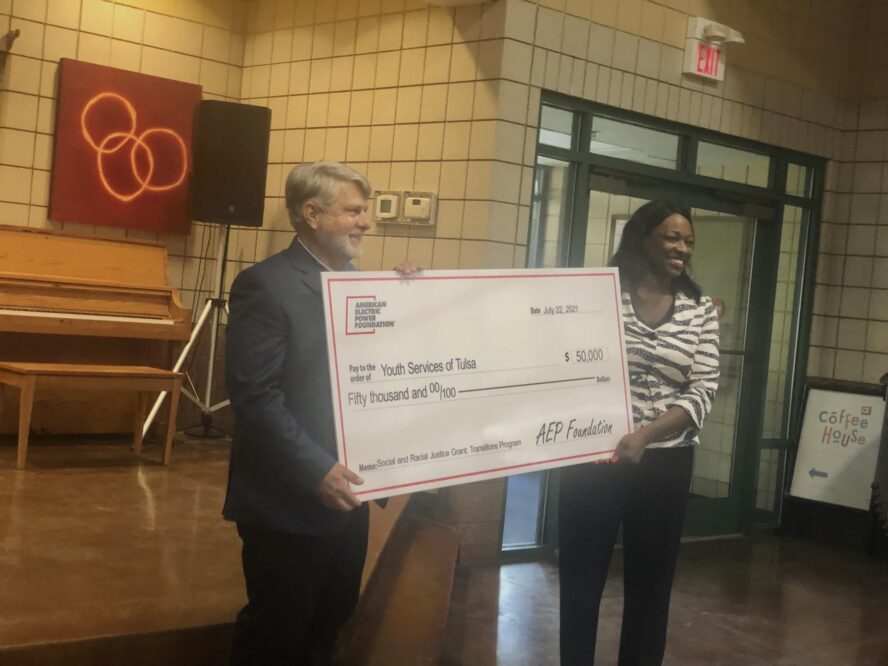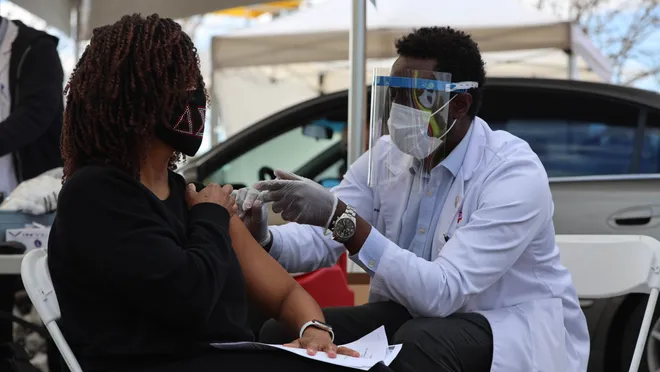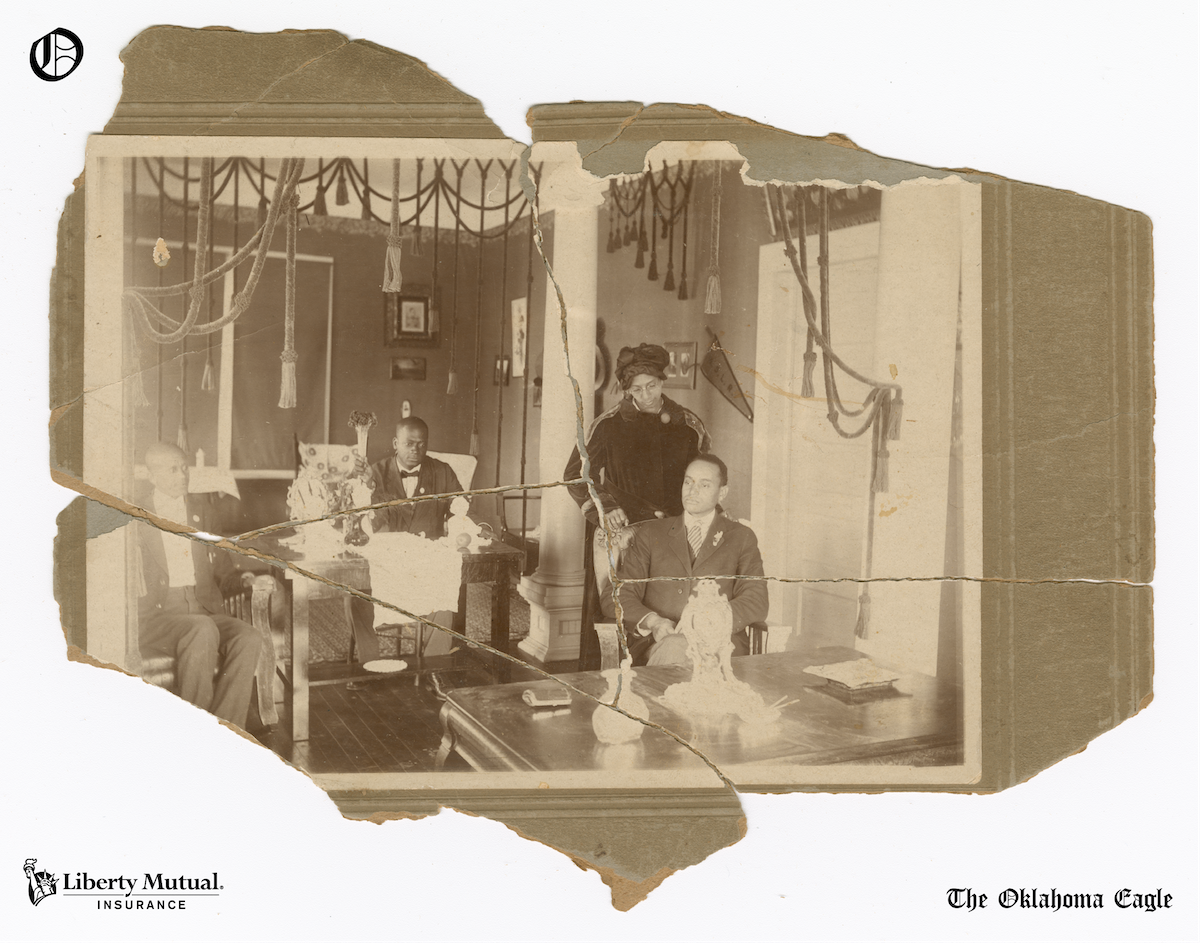
ABOUT THIS SERIES
The Oklahoma Eagle’s “Of Greenwood” series is part of our 2nd Century Campaign, which commemorates the hundredth anniversary of this African American newspaper. This series is made possible through our partnership with Liberty Mutual Insurance.
By Gary Lee, The Oklahoma Eagle
Photography by Basil Childers
Herman Fairchild, a burly plumber who wore so many keys on his belt he jingled when he walked, called a room in Leona Bell Bruner Corbett’s boarding house home for more years than he could remember. Down the hall was a truck driver, a handyman man, and three or four others.
These were the tenants of the sprawling house Corbett owned at 1142 North Greenwood Ave. From the 1920s to the 1970s, she provided lodging, including all utilities, clean sheets weekly, and floors mopped spic and span every Saturday.
They paid her $6 a week.
In Greenwood’s peak, the resourceful landlady also leased spaces to four different shopkeepers on the ground floor. In one store, Mr. Ware sold hot dogs wrapped in wax paper and other sundry goods. Uncle Sonny ran Pearson’s Laundry; Mr. Golf had a barbershop; and Mr. Madison was proprietor of a shoe repair store. For a business, it was hard to beat the location – a prime spot right on Black Tulsa’s busiest boulevard. They paid an average of $30 a month.
Besides the regular boarders, trucker drivers and others would rent rooms from Corbett for a day or two on weekends.
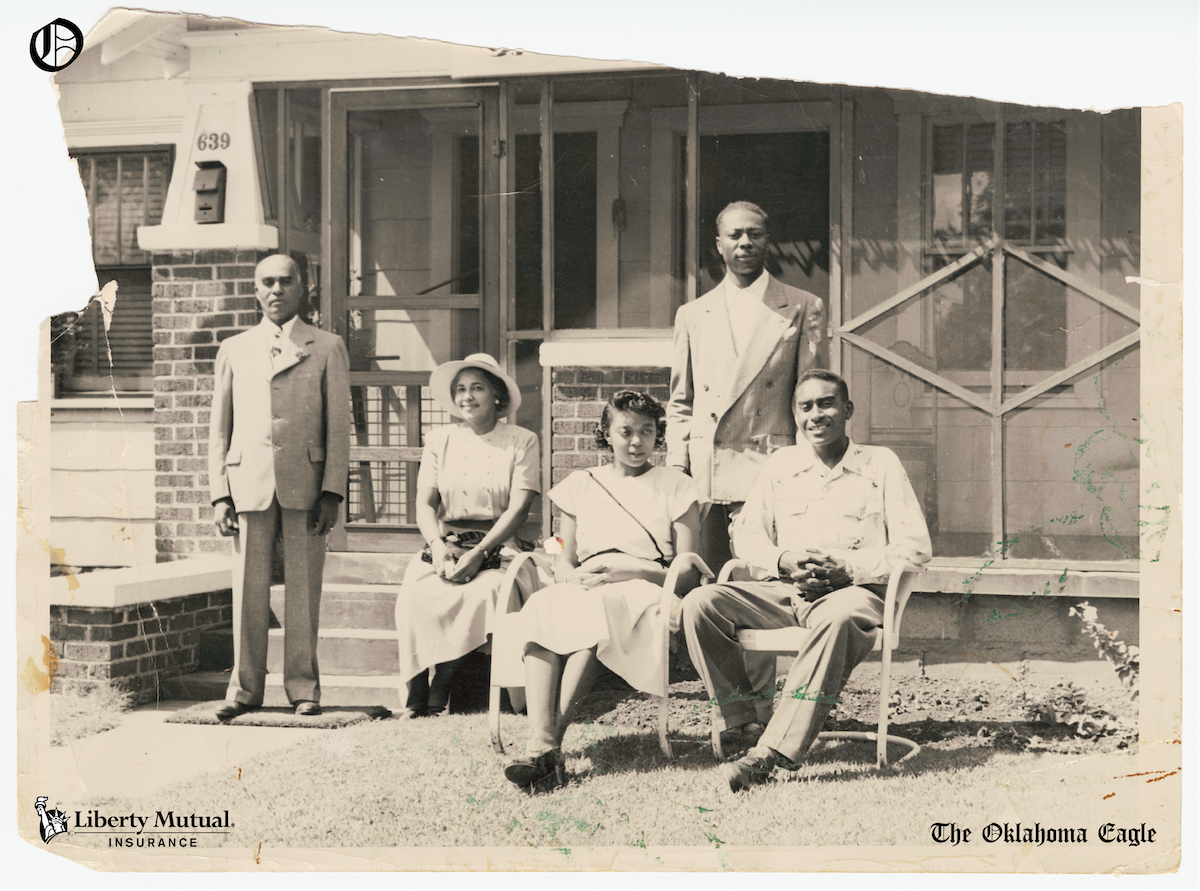
‘An economic stronghold’
“The people, the store owners, and customers pretty much all knew one another,” recalled Mildred Blocker, Corbett’s granddaughter, as she surveyed the block in Greenwood where the house once stood.
The area has long since been remodeled beyond recognition, so Blocker had to squint to point out the spaces where familiar businesses and homes used to be. “They all looked out for us, and we looked out for them,” she said.
Tulsa’s Greenwood neighborhood was a self-contained economic stronghold in its heyday, a commercial marketplace where nearly every dollar earned was spent right in the neighborhood.
It was merchants like Corbett who shaped that legacy.
In the narrative of how Greenwood became “Black Wall Street,” much of the credit usually goes to big titans of the neighborhood’s early days – the Williams family, owners of the Williams’ Dreamland Theater and other businesses, and J.B. Stradford, founder of the prestigious Stradford hotel on 301 N. Greenwood Ave.
But following the 1921 Greenwood race massacre and rebuilding the neighborhood into the 1960s, the day-to-day commerce was primarily the dominion of small Black business owners like Corbett and everyday patrons and journeymen like Fairchild, the plumber.
The money that flowed from one end of Greenwood to the other, between customers and merchants, employers and laborers, had to pass through hands like theirs.
And how it flowed!
By some estimates, the dollar circulated anywhere from 19 to 100 times in Greenwood and stayed in North Tulsa for more than a year before it was spent elsewhere.
The Rev. Charles Jeffrey Jr., famed editor of The Oklahoma Eagle, once boasted not only could you “buy everything from a toothpick to a car” along Greenwood, but what made it unique was all the businesses were Black owners who own their own properties.
Edward L. Goodwin Sr., our late publisher and prominent lawyer, described Greenwood as “once a Mecca for the Negro businessman – a showplace.”
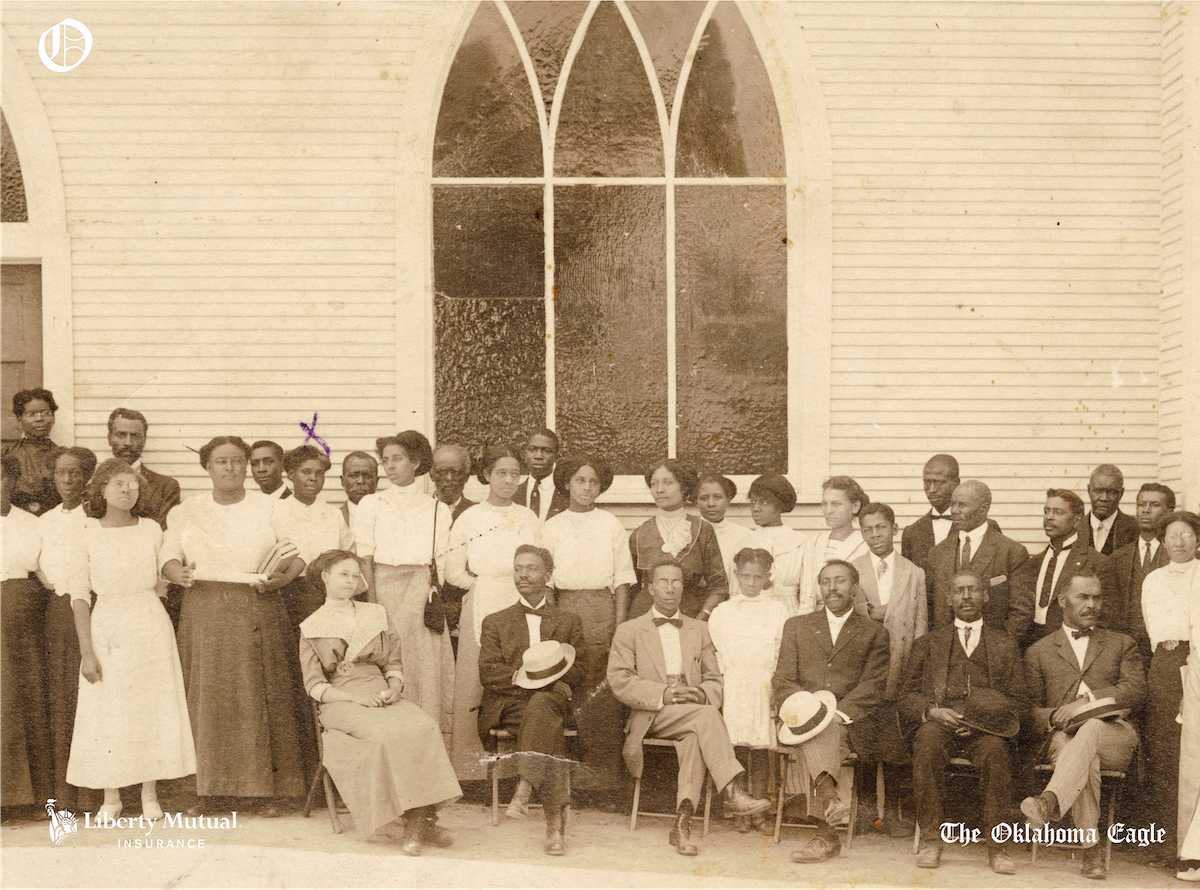
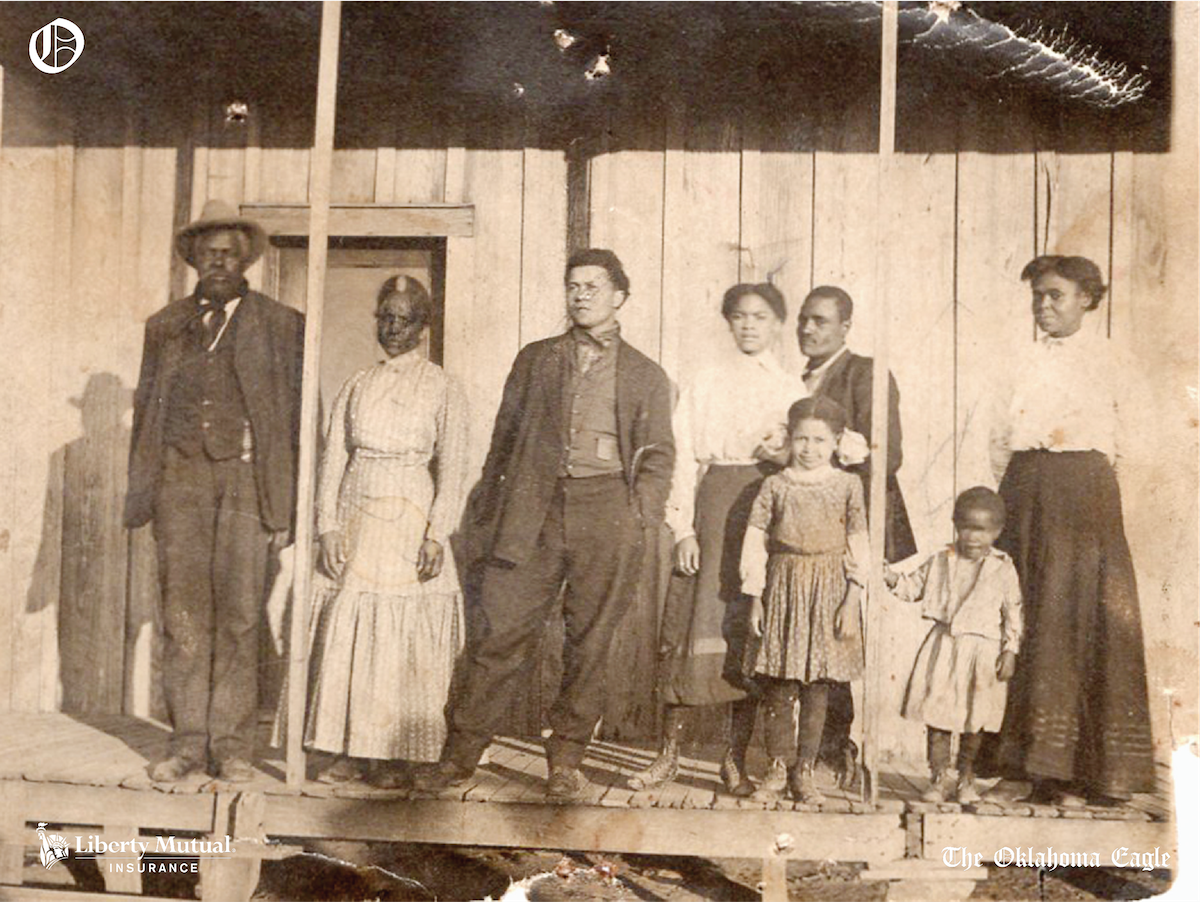
Commerce fueled by Jim Crow
Although Black Tulsans recall Greenwood’s circular dollar legacy with nostalgia, it was a cycle of trade wrought by segregation and the racist laws of the era that supported it. With few exceptions, white merchants strictly followed Jim Crow statutes that barred them from accepting Black customers. Thus, for the first half of the 20th century, Black Tulsans had no choice but to patronize Black-owned businesses. “Nobody else would accept our money,” said Jack Henderson, a North Tulsa civic leader and former city councilman. “So, we had to spend it among ourselves.”
A walk down Greenwood became a stroll down the memory lane of a neighborhood that was a cornerstone of life and livelihood for the family from the 1920s to the mid-1970s. Blocker, who is seventy-something, and her daughter, Michelle, shared Corbett’s story in a couple of interviews. As they reminisced, it was also clear just how much Corbett had been an essential cylinder in the engine of Greenwood’s economy.
Short, poised, and to the point, Corbett was a ubiquitous Greenwood personality.
As a businesswoman, she was a matter of fact. “She was not someone you messed with,” recalled Blocker, who as a child lived in the house with her mom, Ione, and Corbett.
“She was the kind of woman who ran her life pretty well. And she ran everybody
else’s too,” recalled Jocelyn Payne, who frequented the Corbett house as an adolescent.
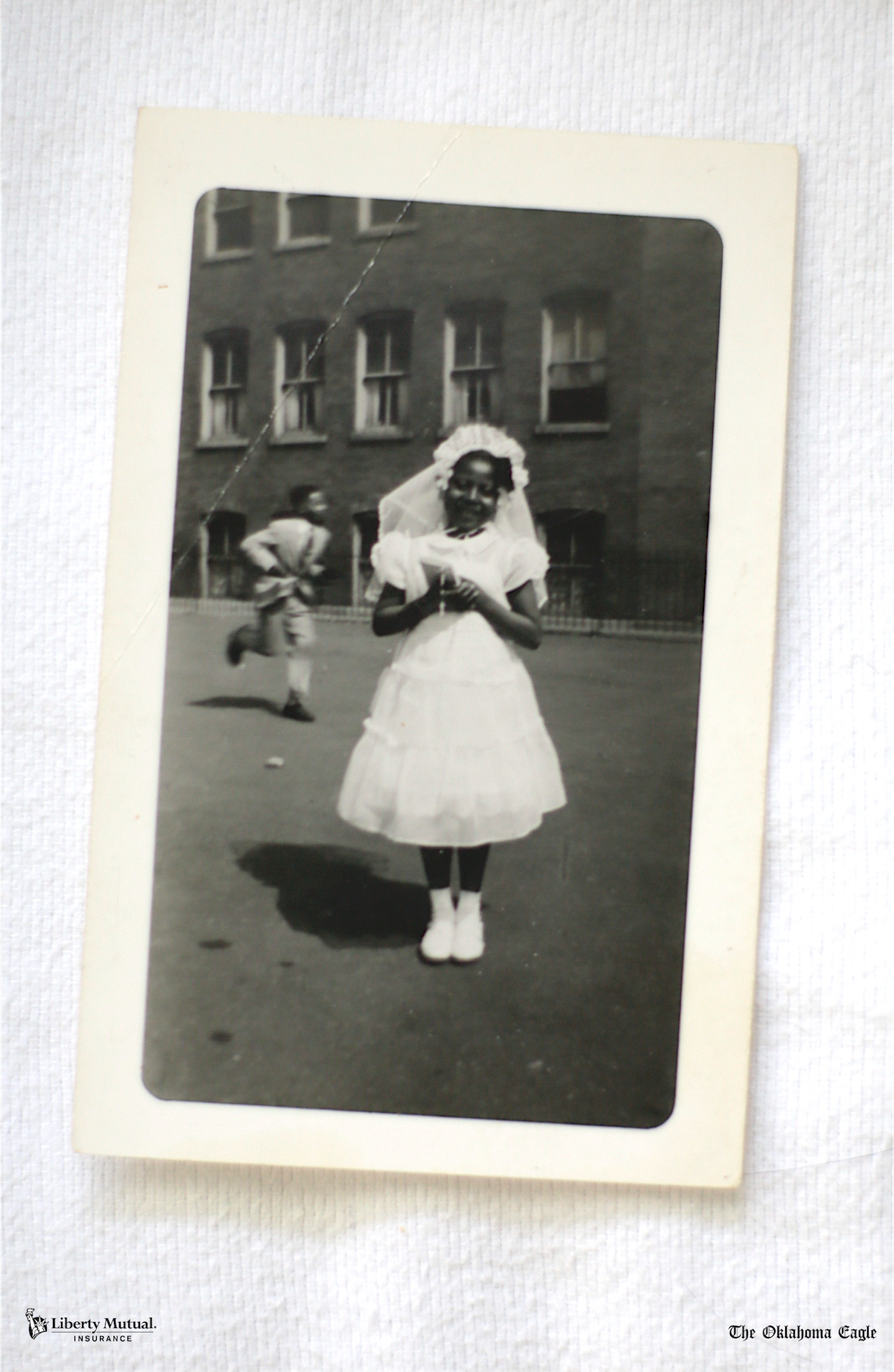
The dollar’s Greenwood trail
The trail the dollar took through Greenwood often ran like a maze.
A look at the earnings and spending of Corbett and others in her circles, based on interviews and our analysis, offers an example.
In the 1950s, Corbett took in an estimated $300 a month – a hefty sum in an era when many laborers earned less than $80 a month. She might run over to Cannon’s Dry Good’s next door to buy a housedress. Mr. Cannon, the owner, would then go down to Kyles Drug Store down the street to pick up a prescription.
Owner Roy Kyle would use what he made to pay his clerk. The clerk might, in turn, take her dress to Caver’s Dry Cleaners going north on Greenwood. When Howard Caver, the owner, had a leaky pipe, he might contact Herman, the plumber who kept a room at Corbett’s place. With the payments his customers gave, Herman could pay rent to Corbett.
The earning and spending of hundreds of other Greenwood residents would take a similar circle.
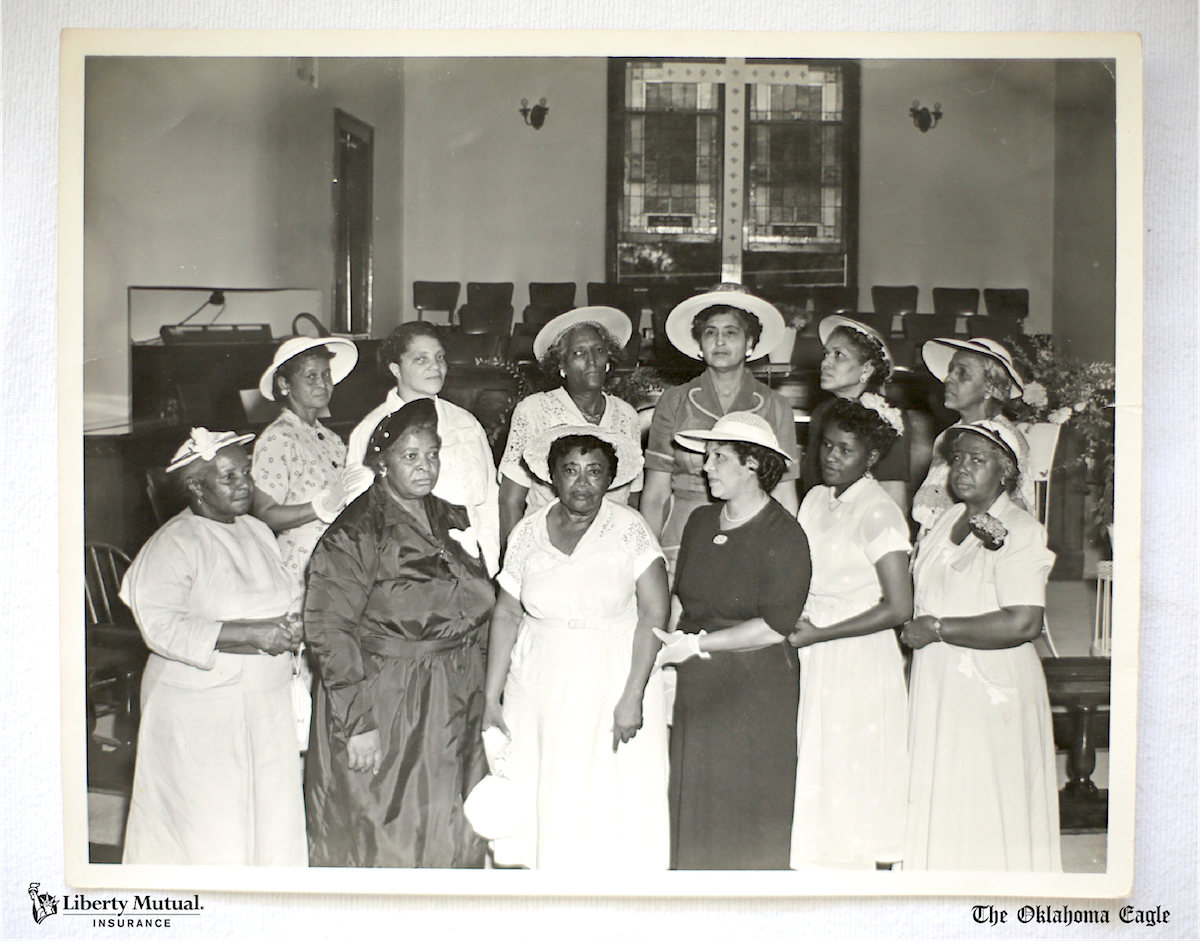
Greenwood’s decimation
The commercial life of Greenwood, by most accounts, peaked in the 1940s and 1950s. The Black community began there in the early 1900s. While most In the early 1900s – most Black men worked either in the nearby oilfields or for whites as laborers – Greenwood mushroomed quickly in size and prosperity to the point that the educator Booker T. Washington dubbed it “The Negro Wall Street.” The May 31-June 1, 1921, race massacre, when a white mob looted the community and murdered up to 300 Blacks, decimated it.
But within four years, Greenwood residents rebuilt the community with such care and speed that the National Negro Business League – which was founded by Washington – held its national convention in the district. The Oklahoma Eagle celebrated the convention by publishing a 10-page edition, packed with 96 ads from primarily Black-owned Tulsa businesses. An editorial boasted that convention visitors would see “the many opportunities the ‘Wonder City’ offers to the right kind of people who are looking for a location” to open a business.
By the 1940s, Greenwood was booming again. According to census reports, there were 240 Black-owned businesses in the neighborhood in 1942.
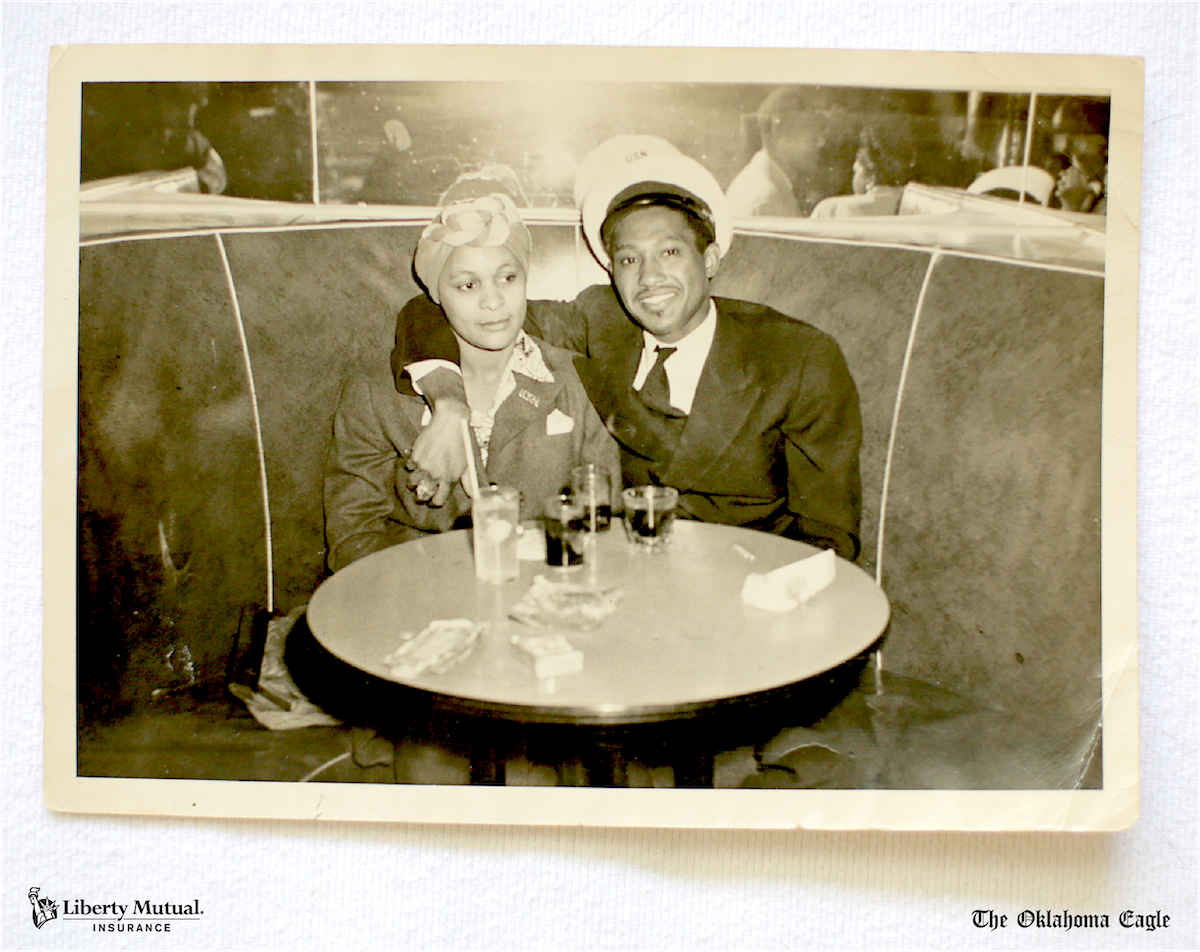
A labor pool of service workers
Different economic and social strata had also begun to form in the Greenwood community. About 40% of the residents were professionals or skilled craftspeople, including doctors, school teachers, administrators and hairstylists. The remaining 60% were laborers, domestic, or service workers.
Even as the neighborhood’s merchant class was rising, only a minority worked for Black-owned enterprises. Most of the Black-owned businesses were small and employed no more than four or five employees.
By the 1940s and 1950s, the monthly salary scales for Blacks in North Tulsa ranged wide. Estimates in 1955 are as follows, with a projection – based on the cost of inflation – of what it would amount to in 2021 dollars in parentheses: Attorney: $1,500 ($15,066); schoolteacher: $1,100 ($11,013); grocery store owner: $500 ($5,000.); maids or chauffeurs: $80-100 ($800-$1,000).
With just about everything imaginable available in stores, cafes, pool halls, juke joints, and other venues packed along the street, there was no shortage of ways for Greenwood folk to burn a dollar.
For a worker who made around $20 to $30 a week, a typical weekly budget would include $2-3 (10%) in tithes to the church; $6 in rent for a room. $8 in groceries from Mann’s, Jared’s, or another food store; 25 cents for a chicken sandwich at Betty’s Chat ‘N Chew. 5 cents for the Oklahoma Eagle newspaper. Possible treats could be 5 cents pack of Wrigley’s gum, 10 cents for a policy ticket or a box of soda crackers, or a jar of Witteman’s shoe polish, each of which cost 25 cents. Occasional splurges could include a men’s suit at Cannon’s for $15 or a house dress from Jared’s for $9. Of course, the tabs were doubled for married couples. And, families with children had to add the costs of school supplies and clothes.
Thriving Black families
The Greenwood bourgeoise, by comparison, spent their money in much the same ways as their white counterparts who lived in South Tulsa. They bought cars, furs and other luxury goods. Before the 1921 massacre, six Black families in Tulsa owned their own airplanes.
Homeownership was a top priority among Tulsa’s Black professionals and skilled workers. By the end of the 1940s, nearly half of Black Tulsans were homeowners, according to census reports. Many of the well-established Black merchants and professionals helped finance the mortgages.
When it came to socializing, the dollar also flowed differently.
While women from higher-income homes might snag a “store-bought” dress for $15 from a door-to-door salesman, her working-class counterpart might opt to buy fabric for 90 cents a yard from Kresge’s and make her dress. A higher-paid man would spend $2.50 on a bottle of bonded whisky, while the working class would get a jug of the moonshine grandma made in the bathtub for $1.
Dating habits were also different between income brackets, according to Princetta Rudd-Newman, a longtime resident of North Tulsa, who is documenting the culture and history of Greenwood in a forthcoming book, “If These Bricks Could Talk.” She discussed how the dollar flowed differently among the affluent and working classes of the community.
“A Greenwood man of means would invite a woman for a steak dinner at the Wagon Wheel,” she said. “You’d get your ribeye, French fries, salad, bread and a drink. That would be hitting the jackpot. It would cost $3.75.”
A more working-class guy might go to Stell’s in the Alley, a back street joint, and order himself a chicken dinner, Rudd-Newman explained. He would then offer different parts of it to the two or three women he talked to there. “He’d get good mileage out of that $1.25 chicken meal,” she said.
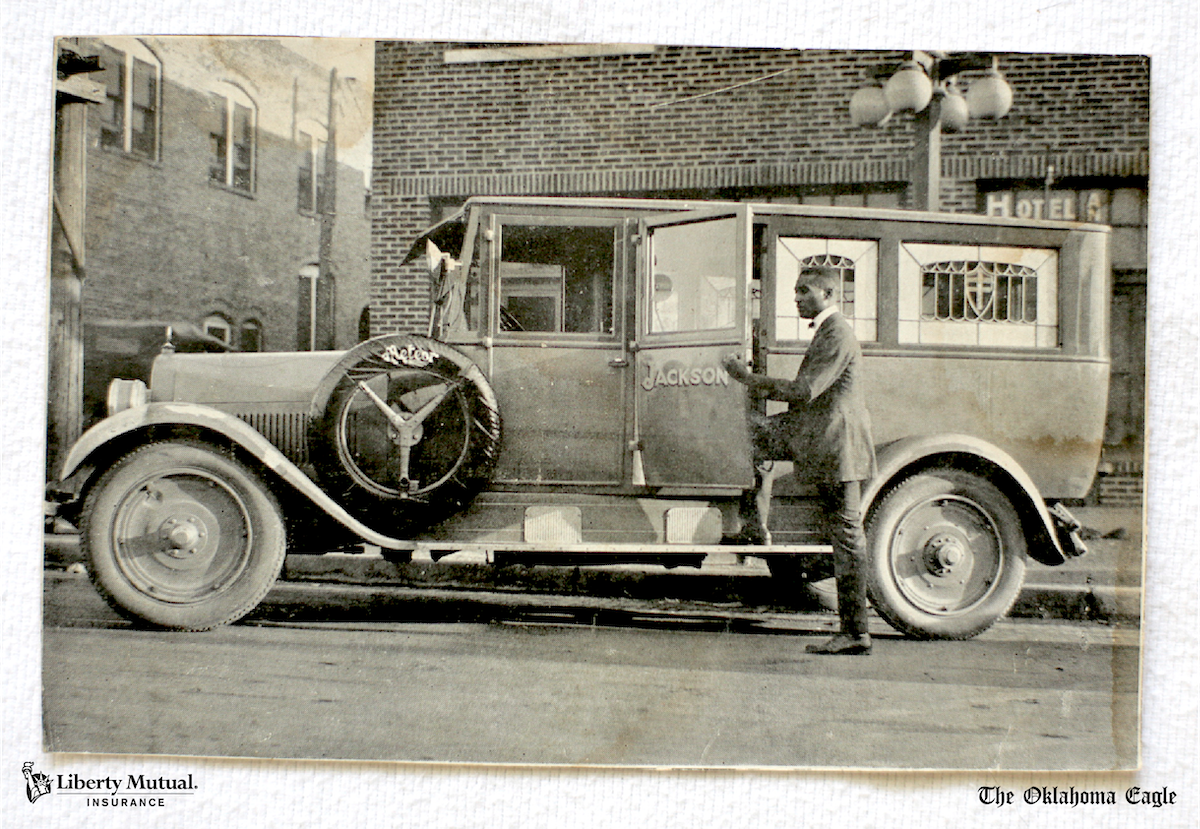
Playing policy
Although the different classes of Greenwood rarely mixed socially, one way in which all sectors of Black Tulsa society came together was by playing policy. The game was wildly popular in Greenwood for decades. The game, a forerunner to Powerball, was a daily lottery, introduced in Chicago in 1885 but played widely in many cities. Players would try to guess which numbers would be picked from a wheel that was spun each day and sometimes several times a day. Participating was called “playing the numbers.”
“Lawyers, waitresses, retirees – people from all walks of life played,” explained Rudd-Newman. As a teen, she worked as a numbers runner, collecting the numbers from players, bringing them to the owners of the wheels. When the winners were announced, she would carry the bounty to them in wads of cash. “Lots of people along Greenwood played: lawyers, waitresses, everyone,” Rudd-Newman recalled.
“Many would play a quarter and end up winning $25. If somebody was feeling lucky, they might play five dollars. They could make as much as several hundred dollars with that kind of bet. Runners would get a certain percentage, too. So, it wasn’t a bad deal.”
By the 1960s, Black Tulsans spent less than 10% of dollars they earned in the Black community, according to analyses of census records.
One of the biggest reasons was that the city of Tulsa had wiped out the heart of Greenwood’s commerce. An Urban Renewal initiative had called for the demolition of buildings along historic Greenwood to make way for the Crosstown Expressway.
That project eventually led to the sale and demolition of the house Corbett had owned on Greenwood since the 1920s. After it was bulldozed, developers constructed a modern ranch-style single-family home at the exact location. The surrounding buildings were similarly erased.
For the Corbett family, the demolition of the house brought an end to an accumulation of wealth they had achieved over a century.
That arc of family history dated back to the last quarter of the 1800s. Corbett’s father, William Rentie, and his wife Ellen, using an allotment his family had received as Creek Freedman, developed a prosperous farm near Checotah, Oklahoma. They joined with another landowner to create Rentiesville, which would become one of Oklahoma’s all-Black towns. When the Renties’ daughter, Leona, married and moved to Tulsa in the early 1920s, she apparently used family funds to purchase a plot of land and built the house on Greenwood. Corbett died in 1975.
Shunning Black-owned
Another significant factor in the sharp decline in the rate Blacks patronized Black-owned businesses is that Tulsa’s white merchants, largely in response to civil rights pressures, gradually opened their doors to Blacks. Residents of North Tulsa began flocking to white-owned stores. Warehouse Market, a sprawling downtown food store, and Froug’s, an Oklahoma-based department store chain, were particularly popular.
As the Black population patronized south side stores, many Northsiders quietly shunned some Black-owned merchants.
“These days, Black Tulsans want to buy from anyone except Black Tulsans,” said Tony B., a Tulsa spoken word performer, in a recent presentation at Tulsa’s Living Arts Center.
Henderson, the North Tulsa civic leader and former city councilman, explained further: “Sometimes Black people look at a Black store owner and express doubts about the quality of their goods. Or they say, ‘I don’t want to make that owner rich.’ We have to move beyond that kind of thinking.”
‘There is a path forward’
For some Black Tulsans, the push to buy Black is strong.
Michelle Blocker, Corbett’s great-granddaughter, says that she and the family patronize Black-owned businesses whenever possible. Wanda J’s, Tropical Smoothie and Rubicon Potato are particular favorites.
Even for North Tulsans who want to buy Black, reviving the level of allegiance to Black businesses is impractical.
According to a recent study by the Washington, D.C.-based Brooking Institute, only 250 – or 1.25% of Tulsa’s 20,000 companies – are Black-owned. Many are spread out throughout North Tulsa and other parts of the city.
In Henderson’s view, North Tulsa can nonetheless do a lot better at supporting Black businesses. “We have to recapture the spirit investing in our community,” he said.
“It’s not realistic to think we can create Greenwood. But maybe we should be thinking more in terms of building certain replicas of Greenwood all over North Tulsa. There is a path forward, but it can only happen if we work together.”









